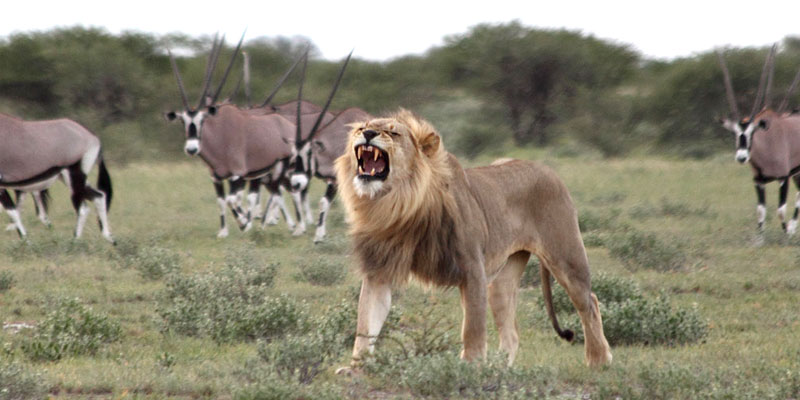
Central Kalahari Game Reserve
In one of the five largest nature reserves in the world, the Central Kalahari Game Reserve (CKGR), you are almost alone in a pristine, secluded and unique dry savanna that is unique in Africa or the rest of the world.
Location and History of the CKGR
The Kalahari Desert forms part of a huge sand basin, which extends from the Orange River in the north of South Africa all the way through Botswana and into Angola. To the west it deviates into Namibia and to the east all the way into Zimbabwe. It covers an area of 1.2 mio km². The Central Kalahari is only a part of the Kalahari and is situated in the centre of Botswana with a size of 53.000 km². Only in 1998 did this area open its doors to tourism. This had the advantage that flora and fauna could develop undisturbed.
The San were the first inhabitants of southern Africa and – according to the latest research – lived here 60.000 years ago already. The formation of the CKGR intended to give the San the opportunity to preserve their traditional culture. However, the Botswana Government banned the San from the CKGR from 1997 to 2005, presumably because of the presents of diamonds in the area. After 2006 they were allowed back into their ancient territories, but were only allowed to use their old water wells and to build new ones in 2011. Today’s way of life of these former hunter gatherers can be traced in the village New Xade, in Ghanzi and through the remarkable projects in Kuru and D’kar.
In the south the Khutse Game Reserve joins the CKGR. It covers an area of 2590 km² and is visited far less than the CKGR. More information hereon is provided in a seperate article.
Specifications
Flora and Fauna of the CKGR
In the northern part of the well-known and frequently travelled Deception Valley the majority of the wildlife is found, especially antelopes and zebras. In this area 120 elephants have been counted. Numerous other animals like lions, oryx antelopes, springbuck, wildebeests, leopards and ostriches can be seen throughout the whole reserve. Remarkable is the population of brown hyena which is seldomly found in other parks. Apart from an impressive abundance of birds numerous species of snakes and scorpions can be found here, so wearing the right kind of shoes is imperative.
The fauna in the Central Kalahari is dominated by grasses, thorn bushes and shrubs and acacia trees, which are able to survive the 10 months dry periods annually. The CKGR is part of the Kalahari Basin in which over the past centuries enormous amounts of sand has been deposited through rock erosion. The wind then formed the elongated "Sand Ridges", dune waves that are so characteristic for the Kalahari landscape. These have been stabilised by vegetational growth so that the typical shifting sand dunes of the Namib Desert are not found in the Kalahari.
Tourism in the CKGR
Botswana and especially the Central Kalahari are still an insider tip for individual travellers. As the CKGR is a fairly new touristic destination the infrastructure still has lots of room for improvement and there is a lot of information to be taken into account, which we will just shortly touch upon here.
Game viewing is best during the rainy season from November to April, especially in the northern part, the Deception Valley. Predator can hunt easily at the waterholes as high grass gives them perfect cover.
Most of the campsites are also found in this area. During heavy rains the dirt roads turn muddy quite fast.
During the dry season from May to October the animals are forced to visit the artificial watering holes. As there is less grass coverage during this time one has a better view into the open landscape than during the rainy season. June and July can be very cold at night.
Visitors to the CKGR have to be self-sufficient regarding fuel, water and food. There are no filling stations or shops in the CKGR thus provisions have to be made before entering the reserve. Fresh water has to be brought along (approx. 10 l per person/day). Water can be refilled at Xade, Matswere and Kutse.
The CKGR has 4 entrance gates where the entrance fees can be paid in cash. Alternatively, entrance fees can be prepaid in Gaborone, Maun or Kasane.
Visitors should be aware that some of the roads in the reserve don’t get to see a vehicle for weeks. Thus it is always better to travel with two cars. Off-road driving is not permitted. GPS is recommendable and a satellite phone can be of advantage.







